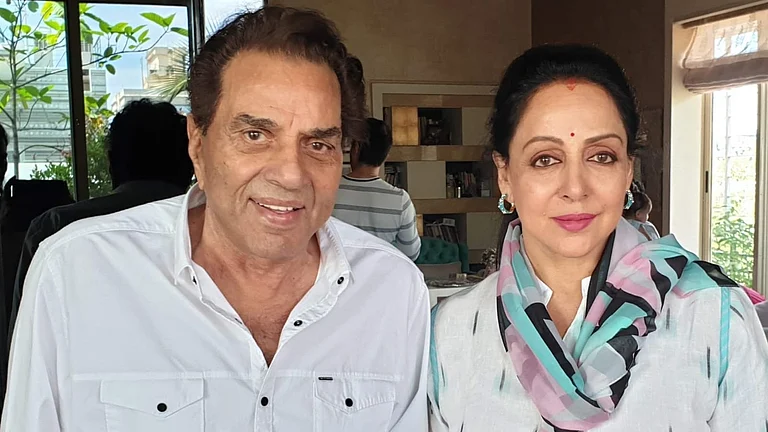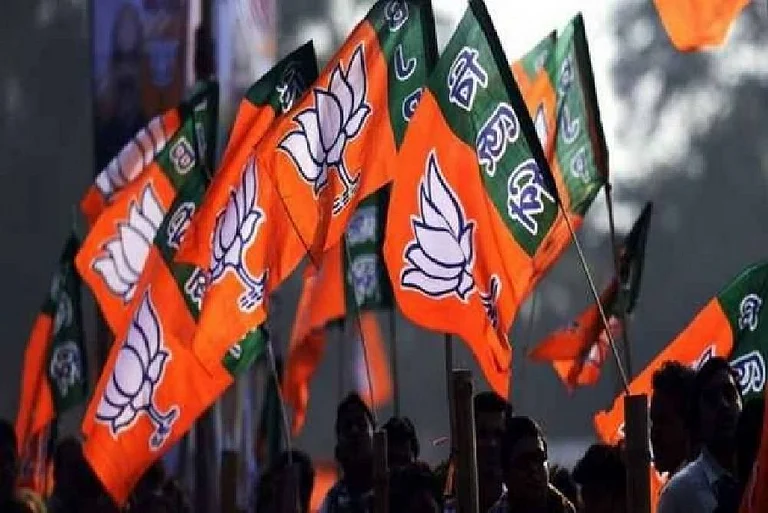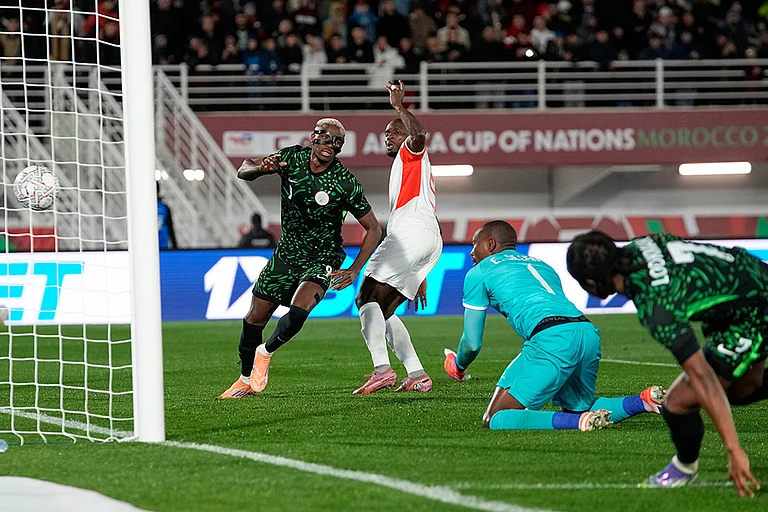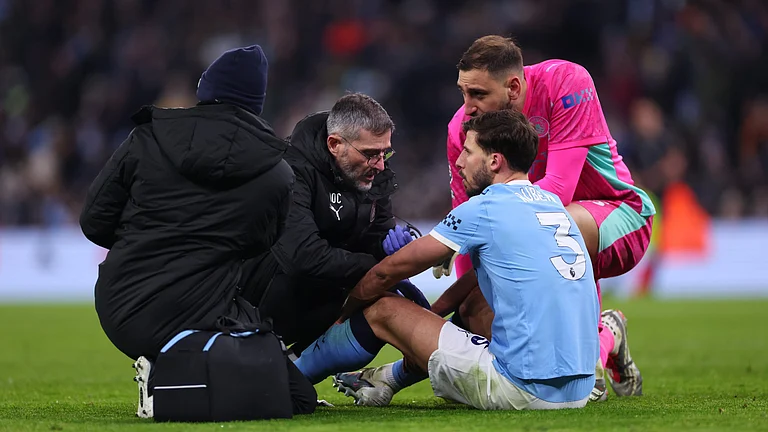…and 1995 was an unexceptional year in India. Or so it seemed to a journalist tasked with the ritual of the year’s annual roundup of news. The list of events was long and diverse, but none appeared too spectacular. “A year without a unifying weave,” he finally concluded, “it wasn’t the best of years, it wasn’t the worst of years. Not the kind of year of which a single or perhaps even two dramatic photographs become the leitmotif, but in which several tell several different stories.” In this first rough draft of history, 1995 was filed away as a year without a gripping plot, a jumble of scattered dots that failed to draw forth a clear thema.
A quarter century later, that messy collage of dots looks different. They emerge as faint but unmistakable footprints in the sand…of an advancing neoliberal project that was reshaping life. In India, that primarily meant ‘opening up’ the economy. The ruling echelons spawned an enabling consensus—it infected all governments to come—but politics seemed aloof from it then. There were only random straws in the wind, a pattern-free assemblage of pairs of events. Some pairs were obviously linked, like the arrival of Kentucky Fried Chicken and the swadeshi call to boycott foreign goods. Some echoed each other through a stark, ironic inversion that we only see now: India formally opening up to the world by joining the WTO (on January 1, 1995), and its economic nerve-centre, Bombay, folding in on itself with a nativist renaming to Mumbai the same year. Some rhymed with each other: the “Lotus Wars” that were defining the BJP to the “Coke Wars” between Pepsi and Coca Cola. They seem so disparate as to belong with each other only by dint of occupying the same time-zone. And yet, time was not a neutral thing: by bundling things together, it forced them to forge linkages. In each instance, our attention goes to the figure, but it was the ground itself that was creating a shared ecosystem.
ALSO READ: Silver Jubilation
Globalisation was a deeply unsettling moment. In India, that ’90s conjuncture made visible deep rifts and contestations that had long shaped its postcolonial history. What stands out there is a new encounter with the ‘foreign’ that generated both excitement and backlash. The liberalisation project was not yet set in stone. It was still fragile, mired in deep contradictions, and the future we now inhabit a mere speculation.
The foreign world India encountered was, of course, itself undergoing a change. The Cold War had ended and freedom was declared for freedoms—including, especially, that of free markets. But what could be seen then and there? Well, how about the charred carcass of the Alfred P. Murrah Federal Building in downtown Oklahoma? And 168 dead people, 324 other buildings “destroyed or damaged”? The Oklahoma City Bombing of 1995 was the biggest act of terror in the US till 9/11. The more spectacular template of modern terror set by the latter event—with its handy Islam vs the West narrative—has effected an erasure of memory. What especially lies forgotten is that those terrorists were White Americans.
ALSO READ: Postcards From The Newsroom
Unconnected? Trace a line from Tim McVeigh to his roots in America’s far-right militia groups and patriot movements. And thence, via the overground Tea Party, to Trump and the Proud Boys. Next, trace the longitudes and latitudes of that spirit—from Japan’s uyoku dantai and their ethos seeping into government via Shinzo Abe, to Europe’s rich cache of right-wing impulses flowing from the neo-Nazi fringes to the centre, to Erdogan’s Turkey, to Duterte’s Philippines, to Bolsonaro’s Brazil, to Anders Breivik and ISIS. From racism and xenophobia at one end, to right-wing populism in the middle, to an alliance with global capital shot through with a conflicted, nativist fear of it…all the dots suddenly seem to converge into a line. Post hoc ergo propter hoc is deemed a fallacy in logic, but it’s a striking coincidence that the lush growth of the Right globally coincided exactly with global glasnost. What could it be about globalisation that it produced its own dark doppelganger?
Now map that story onto India. In 1995, it was salad days here—McWrap was just around the corner. India was making fast food out of structural adjustments, IMF loans, relaxed trade barriers, the deposing of License Raj. The smell of freshly grilled economic freedoms wafting in the air, consumers looked forward to better quality goods, competitive prices, greater choice. Foreign temptations were streaming in—Coca Cola, Pepsi, KFC, McDonalds…. We could buy a pan-crust slice of the world without going abroad. It is here, at that piquant point of urban reveries, that we witness the opening of new and old ruptures in politics.

New technology—mobile phones and the internet—was mostly received with curiosity and enthusiasm, but consumer brands became the new Panipat. Newspapers revelled: Siege on Kentucky Fried Chicken, said a headline in August ’95. Venue: the KFC outlet on Bangalore’s famous Brigade Road. Several farmer and animal rights organisations had descended upon it with “direct action” on their mind. A police platoon was deployed and a prohibitory order imposed around a kilometre’s radius. The activists were not deterred. Nor were consumers. Newspapers carried accounts of long queues in the afternoons and nights.
ALSO READ: At Swim, Two Birds Perched On Latticed Sites
This battle was typical of the mid-’90s. A variety of interest groups had come together to fight foreign corporations. The Congress was the prime mover of the liberalisation project; the Communists/socialists were bitterly opposed to it, and the BJP was torn between swadeshi and laissez faire. The dour hardliners of the Swadeshi Jagran Manch (SJM) had an upper hand. The BJP’s 1995 plenary session in Mumbai became the site of a fractious tug-of-war. SJM troopers won that round. They refused to allow Coca Cola and Pepsi to sell their soft drinks at the plenary’s Mahalaxmi Race Course venue! The delegates were instead asked to buy ‘ethnic snacks’ and indigenous soft drinks like Thums Up and Limca.
Ironically, Thums Up and Limca had by then been sold to Coca Cola, which had returned to India in the early ’90s. (The sale by Parle Drinks, their Indian owner, was seen as a betrayal, a Mir Jafar-like “selling-out”.) So the very categories of ‘indigenous’ or ‘foreign’ were already blurred: the first denoted only a nominal loyalty. Brands like Thums Up retained a unique Indian identity as their USP, but Indian capital had fused together with foreign capital. It was a cola cocktail. The mid-’90s were made of these contradictions: foreign capital had quietly made inroads, even if foreign goods were still viewed with suspicion. As a newspaper editorial suggested, the owner of Parle Drinks was a shrewd businessman who “knows what it is to ‘taste the thunder’ of globalisation”. But this encounter with global modernity was to sharpen both desire and fear, and the real political brew that would be distilled out of that cocktail was not far.
ALSO READ
Ravinder Kaur is the author of Brand New Nation: Capitalist Dreams and Nationalist Designs in Twenty-First Century India























